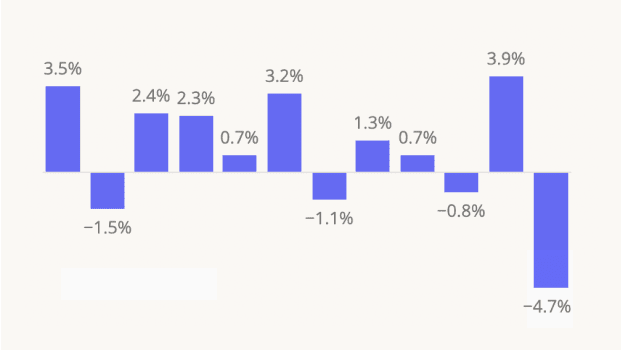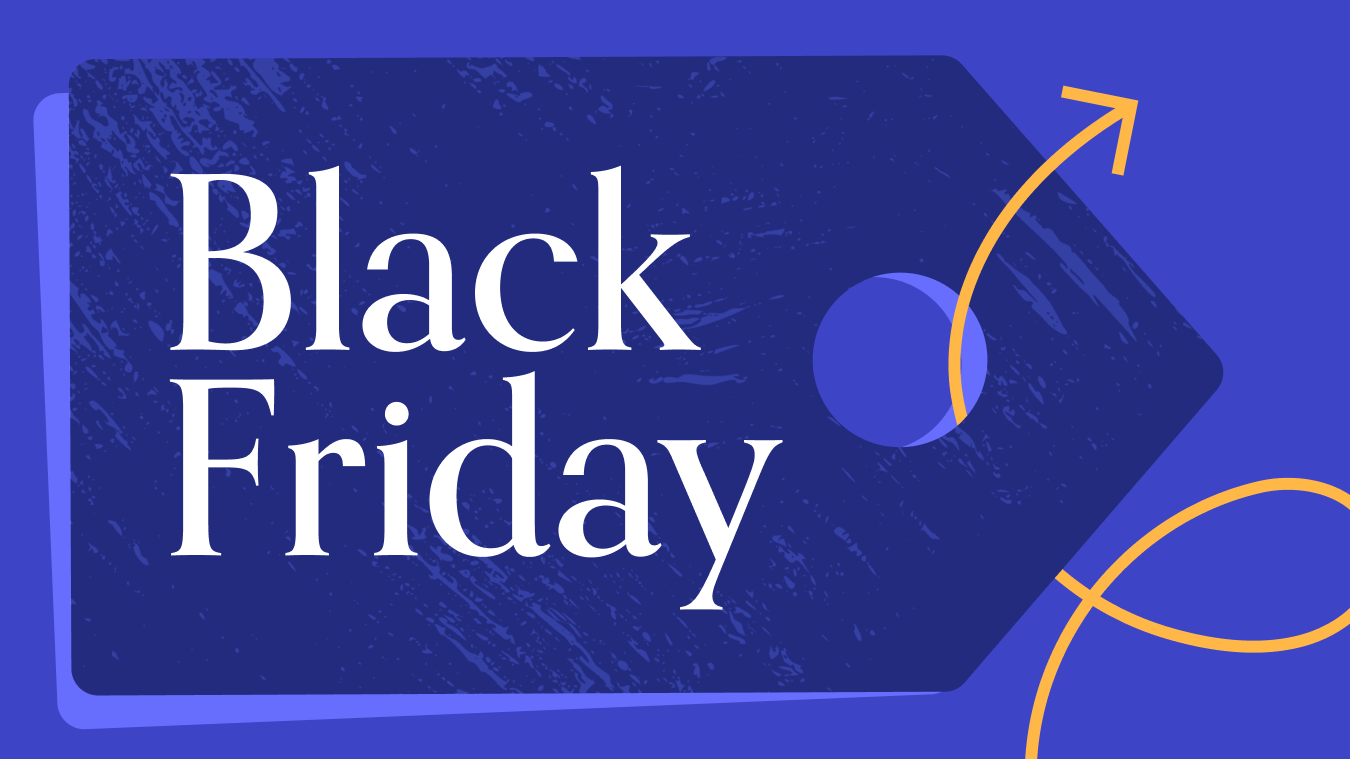Is lululemon Poised for a Holiday Rebound?
Placer.ai November 2025 Mall Index: Early Strength Offsets a Softer Black Friday
Four Black Friday Signals for the 2025 Holiday Season
Will Upscale Dining Lead the Holiday Season Again?
Did Fewer Franchise Films Limit Thanksgiving’s Movie Theater Lift?
Darden Heads Into Holiday Season With Strong Visit Trends
How Did Grocery Stores Perform This Turkey Wednesday?
Short Visits Surge as Kroger Bets on Store-Based Fulfillment
How Do Holiday Shopping Patterns Differ for Off-Price and Traditional Apparel?
Dollar Tree and Dollar General Thrive Amid Inflation Fatigue
DICK's Sporting Goods Riding Positive Visit Trend into the Holidays
October 2025 Placer.ai Office Index: Continued Momentum
Red Cup Day 2025 Outperforms Last Year With Bigger Crowds Than Bearista
Gap and Urban Outfitters See Visit Increases in Q3
Back to the Future of Retail: Why Technology Is Bringing Us Full Circle
Department Stores Ahead of the Holidays
Superstores and Warehouse Clubs Find Early Holiday Momentum
Lowe’s and The Home Depot See the Future of Home Improvement in the Next Generation
TJX, Burlington, and Ross Gear Up for a Blockbuster Holiday Season
Is Turkey Wednesday the Only Big Day for Grocers?
Placer.ai October 2025 Mall Index: Shoppers Return to Malls
How Starbucks Proved That Free Isn’t Everything
Denny’s Goes Private: What’s Next for America’s Diner
Three Retailers to Watch Ahead of the Holidays
Serving Those Who Served: How Restaurants Honor Veterans Day
High-Street Retail Poised for Another Holiday Rush
Offline Growth Drives Engagement for Warby Parker
Grocery Outlet Bargain Market & WinCo Still Thriving Amidst Inflation Fatigue
Does CAVA Still Have Growth Potential?
Catching Up With 2021’s Dining IPOs
Wendy’s Bets on Fewer, Bigger Deals in Q3 2025
Yum! & RBI: QSR in Q3 2025
Shake Shack & Wingstop: Navigating Q3 Waters
Sips Of Success: Coffee in Q3 2025
Texas Roadhouse and Chili’s: Strong Q3 Traffic and a Secret Sauce of High-Income Diners
October Promotions Aimed to Capture Demand From Value-Seeking Consumers In-Store and Online
Retail Outlook: A Tale of Two Consumers Heading into Holiday 2025
McDonald’s and Chipotle Face Headwinds in Q3 2025
Manufacturing Foot Traffic Signals Continued Caution
September 2025 Placer.ai Office Index: A Fall Resurgence
Placer.ai September 2025 Mall Index: Summer Slowdown Extends Into Fall
Summer Surge for Sturgis as Motorcycles Vroom En Masse
K-Beauty & Personalization Drive Beauty Traffic
All the Things I Think I Think About Retail Over the Last Quarter: Amazon, Walmart & Why the Box May Soon Be on the Other Porch
The Geography of BevAlc Retail Growth
The Comeback Blueprint for Kirkland’s and Bed Bath & Beyond
Distinct Playbooks Driving Growth in Premium Home Retail
Do QSR Value Promotions Still Resonate With Consumers?
Who’s Losing Grocery Share to Dollar General – and What Consumer Habit Is Driving Its Growth?
Exploring Barnes & Noble’s Recent Acquisitions
3 Factors Driving Dillard’s Department Store Success
Expansion Into New Categories Signals Shift for Gap Inc.
Beauty and Fitness Foot Traffic: From Post-Pandemic Correction to New Normal
Hobby Lobby and Michaels Defy Discretionary Spending Headwinds
Black Rock Coffee's Post-IPO Growth Potential
How Asian Grocers Are Redefining the Grocery Experience
Affluent Shoppers Sustain Luxury, But Growth Potential May Be Limited
Costco Early Openings Reshape Store Traffic Patterns
Q2 2025 Restaurant Recap: A Cautious Consumer Shapes Dining Trends
Is Costco’s Momentum Built to Last?
The US Open: A Comparison of Visitors to Fan Week and the Main Draw
Republic Square’s Summer Programming Proves to be a Hit
Darden Restaurants’ Portfolio Powers Through Consumer Headwinds
Are Cracks in Consumer Resilience Beginning to Show?
Placer.ai Manufacturing Index: Traffic Dips in August
Will Delayed Car Purchases Fuel a Surge in Aftermarket Maintenance?
August 2025 Placer.ai Office Index: An End-of-Summer Slump?
What Are the Fast-Growing QSR Categories in 2025?
Placer.ai August 2025 Mall Index: Is Consumer Caution Weighing on Mall Performance?
Subscriptions Drive Eatertainment Visits for Topgolf, Dave & Buster’s, and Chuck E. Cheese
Has Starbucks' Pumpkin Spice Latte Retained Its Appeal in 2025?
Thrift Store Visit Growth Outpaces Apparel as Tariffs Loom
America’s Parks Are Calling: Later, Longer, Busier
How Economic Realities Are Redefining Vegas Tourism
Nordstrom Anniversary Sale: An Event that Continues to Find Success Amid Reinvention
Manufacturing Visits Drop Post-Tariff Implementation
Semi-Annual Sale Drives Visit Surge For Bath & Body Works
Ulta's Post-Target Future Looks Strong
Where Can Dollar General & Dollar Tree Still Expand?
Five Below & Ollie's Traffic Signals Growth for Value Retail
Gap Inc. Q2 2025: Old Navy Leads Foot Traffic Gains as Middle-Income Shoppers Return
Best Buy H1 2025 Traffic Data Suggests a Recovery Is Underway
How Athletic Retailers are Weathering the Storm in Q2 2025.
Expansions Drive Visit Gains for Wholesale Clubs
Discretionary Slowdown Impacts Kohl's & Macy's Mid-Market Brands
Value-Driven Shoppers Still Fueling Off-Price Growth at Burlington, Ross, & Citi Trends
Home Depot & Lowe's: Navigating Challenges & Finding Growth in 2025
Lollapalooza Supercharges Summer Tourism in Chicago
What Walmart and Target's Q2 2025 Traffic Reveals About Future Performance
TJX Q2 2025 Visit Data Points to Strong Performance
The Summer Slowdown: Why Consumers Are Pumping the Brakes on Travel
Placer.ai Office Index: July 2025
Placer.ai Mall Index: July 2025
Retail’s Balancing Act: What the First Half of 2025 Reveals About Evolving Consumer Priorities
Din Tai Fung: Sky High Average-Unit-Volume is a Recipe for Success
Bracing for Impact: July's Manufacturing Surge Reveals Tariff Anxiety
How EAT, TXRH & BLMN Are Navigating the Q2 2025 Dining Market
Life Time & Planet Fitness Q2 2025 Visit Recap
Growth vs. Optimization: A Q2 2025 Analysis of First Watch, Denny's, & Dine Brands
Scaling Fast-Casual: CAVA's Depth vs. Sweetgreen's Breadth in Q2 2025




.svg)





.png)
.png)

.png)
.png)









